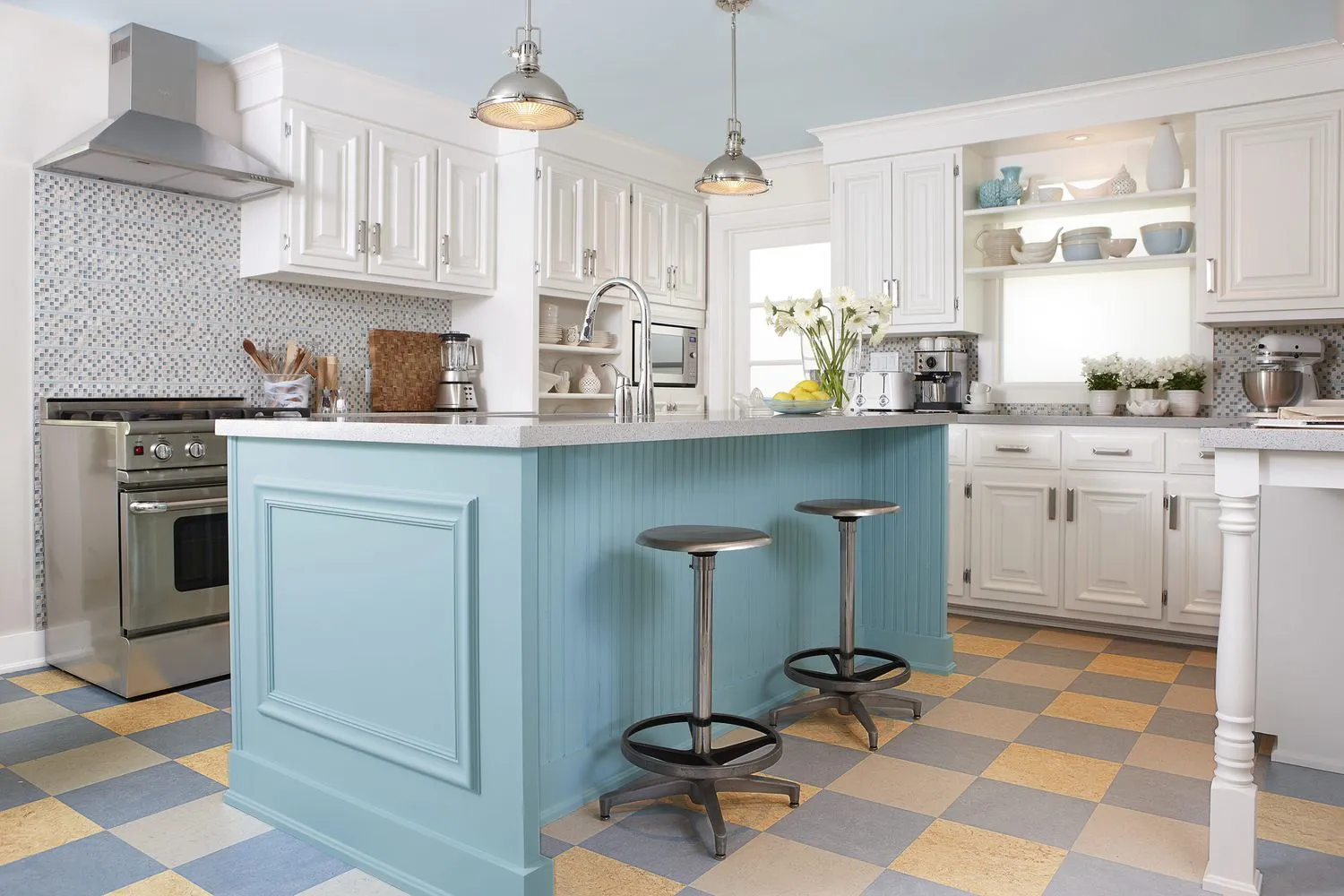
Linoleum flooring has been a popular choice for over 150 years, and it’s not hard to see why: It’s durable, eco-friendly, and — best of all — cheap. While lineloum has a reputation for being old-fashioned, modern versions of the product are available in a wide variety of designs and colors to fit even a high-end space.
This guide will explore the benefits, installation process, and maintenance of working with linoleum flooring to help you determine if it’s the right choice for your home.
What Is Linoleum Flooring?
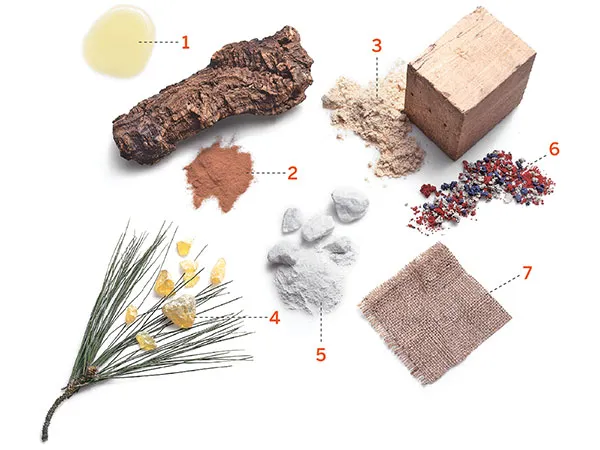
Linoleum is a resilient flooring material made from natural ingredients including linseed oil, cork dust, wood flour, pine resin, ground limestone, and pigments pressed onto a jute backing. This unique composition gives linoleum its durability, comfort underfoot, and antimicrobial properties. Unlike vinyl, which is often confused with linoleum, true linoleum is biodegradable and environmentally friendly.
Pros and Cons of Linoleum Flooring
Before deciding on linoleum flooring, weigh its advantages and disadvantages. Understanding these will help you determine if linoleum is the right choice for your needs and preferences.
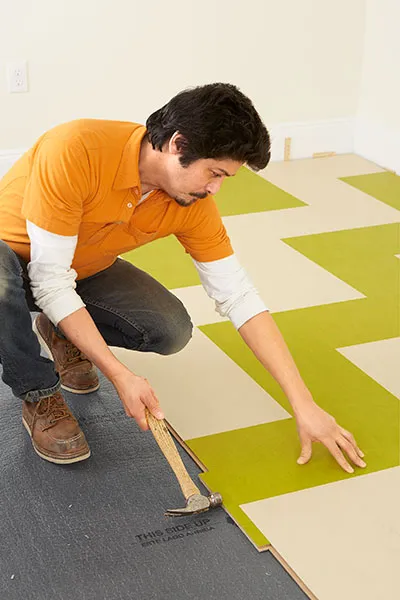
Advantages of Choosing Linoleum
- Durability: Linoleum can last for decades when properly maintained, making it a cost-effective choice in the long run.
- Eco-friendly: Made from natural, renewable materials, linoleum is biodegradable and has a low environmental impact.
- Antimicrobial properties: Linoleum naturally resists bacteria and mold growth, making it ideal for kitchens and bathrooms.
- Comfort: The material is soft underfoot and provides insulation against cold floors.
- Design versatility: Available in a wide range of colors and patterns, linoleum can complement any interior design style.
Downsides To Consider
- Moisture sensitivity: While water-resistant, linoleum is not waterproof and can be damaged by standing water if not quickly cleaned up.
- Initial odor: New linoleum may emit a linseed oil smell that can take a few weeks to dissipate.
- Professional installation recommended: For best results, sheet linoleum typically requires professional installation, which can increase overall costs.
- Fading: Direct sunlight can cause linoleum colors to fade over time.
- Refinishing needs: The protective top layer may need to be reapplied every few years to maintain its appearance and performance.
Types of Linoleum Flooring
Linoleum flooring comes in several formats, each with its own installation method and benefits. Understanding these options can help you choose the best type for your needs and skill level, if you’re considering a DIY installation.
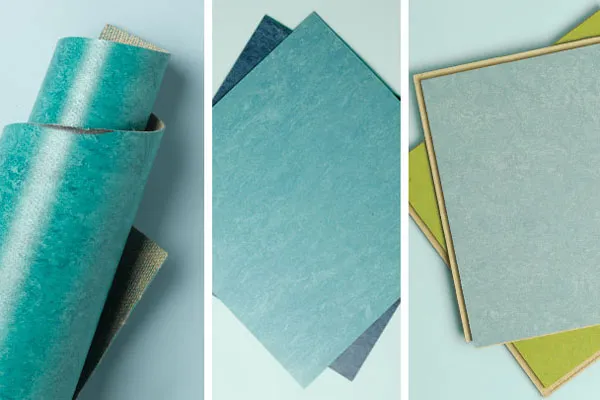
Sheet Linoleum
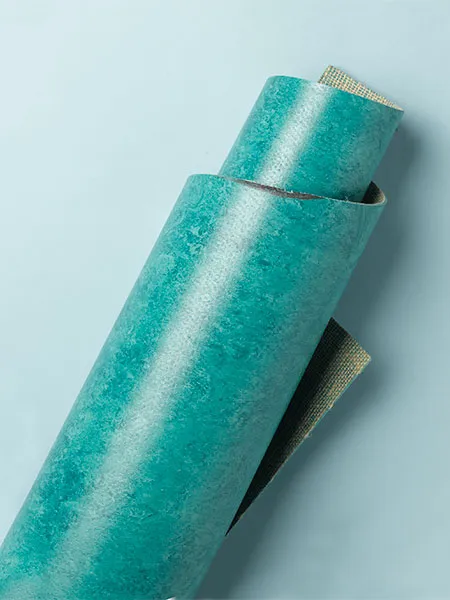
Sheet linoleum comes in large rolls, which makes it easy to cover large areas with minimal seams. This makes it especially good for kitchens, bathrooms, and other spaces where moisture resistance is important. To apply, glue down the linoleum sheets to the subfloor using a water-based adhesive. Because of the scope and specific tools needed, we recommend professional installation for best results.
Linoleum Tiles
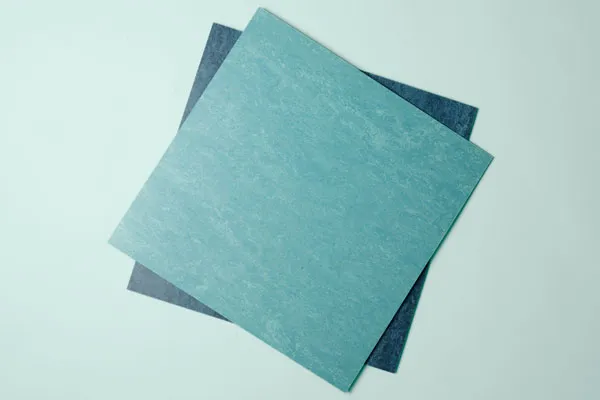
Linoleum tiles offer more flexibility in design and are easier to install than sheet linoleum. They typically come in 10-inch or 20-inch squares and 10- x 20-inch rectangles. The edges are slightly beveled to create tight, nearly invisible seams. Linoleum tiles can be installed in various patterns, allowing for creative design options.
Click-Together Linoleum Planks
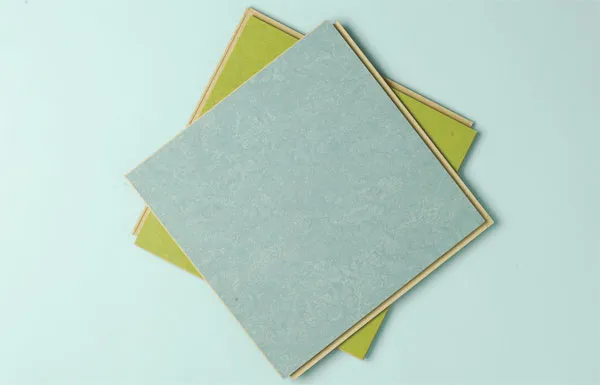
Click-together linoleum planks are the most DIY-friendly option. These planks typically measure 12 inches by 36 inches and feature a tongue-and-groove system that allows them to be installed without adhesive. This floating floor system can be laid over subfloors that aren’t perfectly level, making it a good choice for quick renovations or rental properties.
How Linoleum Compares To Other Flooring Options
When choosing flooring for your home, it’s wise to compare linoleum with other popular options. This comparison can help you make an informed decision based on your specific needs, budget, and style preferences.
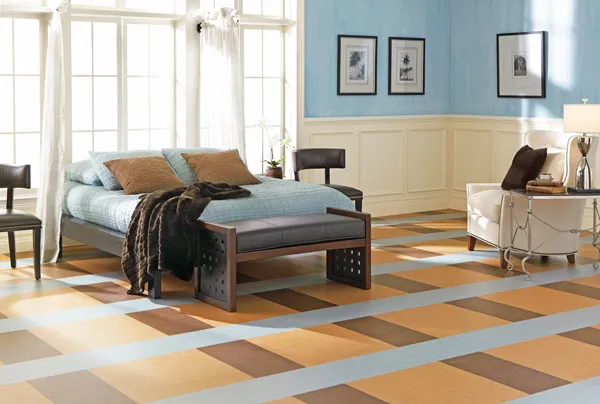
Linoleum vs. Vinyl
While often confused, linoleum and vinyl are distinct flooring materials with different properties:
- Composition: Linoleum is made from natural materials, while vinyl is a synthetic product made from polyvinyl chloride (PVC).
- Durability: Linoleum typically lasts longer than vinyl, often 20-40 years compared to vinyl’s 10-20 years.
- Environmental impact: Linoleum is biodegradable and eco-friendly, while vinyl is not recyclable and can release volatile organic compounds (VOCs).
- Cost: Linoleum is generally more expensive upfront, but because of its increased lifespan, may be more cost-effective long-term.
- Maintenance: Both materials are generally easy to clean.
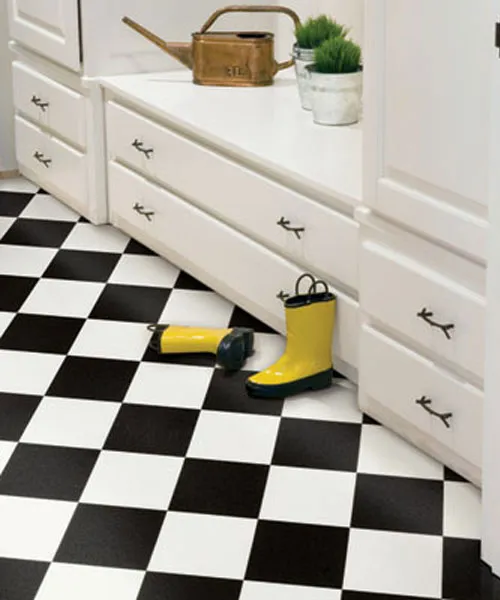
Linoleum vs. Hardwood
Linoleum and hardwood are both durable flooring options, but they differ in several key aspects:
- Appearance: Hardwood offers a classic, natural look, while linoleum provides more color and pattern options.
- Durability: Linoleum is more resistant to scratches and dents than many hardwoods.
- Maintenance: Linoleum requires less maintenance than hardwood, which may need periodic refinishing.
- Cost: Linoleum is generally less expensive than hardwood, both in material costs and installation.
- Lifespan: While both can last decades, hardwood can generally last longer with proper care and refinishing.
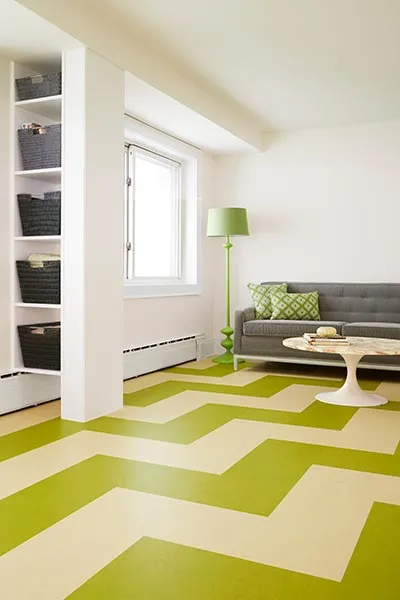
Installation Process for Linoleum Flooring
DIY Installation Tips
If you’re considering a DIY installation, click-together linoleum planks are your best option.
- Acclimate the flooring: Allow the linoleum to adjust to room temperature for at least 48 hours before installation.
- Prepare the subfloor: Ensure the subfloor is clean, dry, and level.
- Use the right tools: A tapping block and pull bar can help ensure tight seams.
- Start in the right place: Begin in a corner and work your way out, leaving an expansion gap around the edges.
- Cut carefully: Use a sharp utility knife and a straight edge for precise cuts.
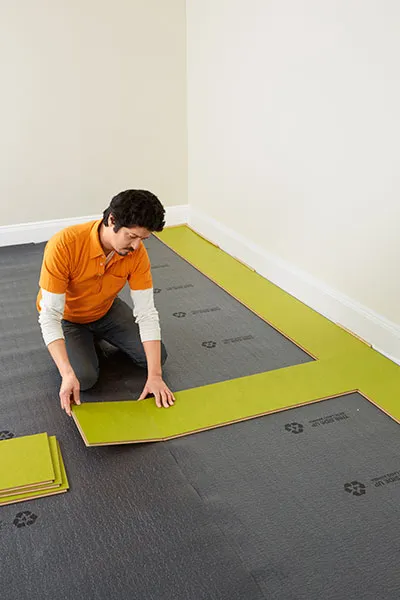
When To Hire a Professional
For sheet linoleum and tile installations, it’s often best to hire a professional. Here’s what they handle:
- Proper subfloor preparation, including leveling and moisture testing.
- Accurate cutting and fitting, especially around obstacles and in corners.
- Correct adhesive application to ensure a long-lasting installation.
- Proper sealing of seams to prevent moisture penetration.
- A smooth, even surface without bubbles or gaps.
Professional installation is particularly important for sheet linoleum, as improper installation can lead to bubbling, seam separation, and premature wear.
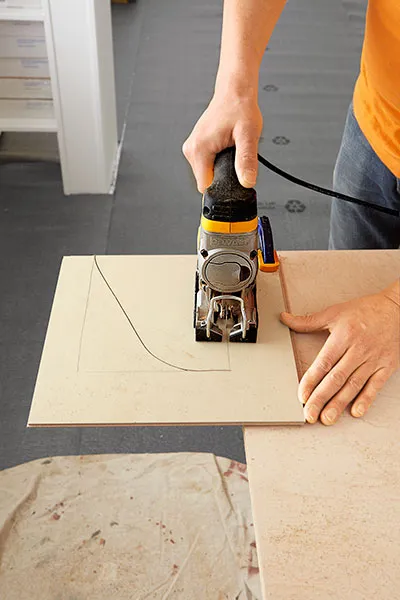
See the full step-by-step instructions for How to Install a Linoleum Tile Floor here.
Maintenance and Care of Linoleum Floors
Proper maintenance is key to preserving the beauty and longevity of your linoleum flooring. With the right care routine, your linoleum floors can keep their gleaming appearance and high performance for decades.

Daily Cleaning Routines
For everyday maintenance, follow these simple steps:
- Sweep or vacuum regularly to remove dirt and debris.
- Damp mop with a pH-neutral cleaner.
- Avoid using harsh chemicals or abrasive cleaners that can damage the surface.
- Clean up spills promptly to prevent staining or water damage.
- Use felt pads under furniture legs to prevent scratches.
Long-Term Maintenance Strategies
To keep your linoleum floors in top condition over the years, consider the below steps:
- Apply a liquid polish every 6-12 months to restore shine and protect the surface.
- Buff the floor periodically with a soft cloth or buffing machine to maintain luster.
- Reapply the protective top coat every few years, or as often as the manufacturer recommends.
- Avoid using rubber-backed mats, as they can stain the linoleum.
- Consider professional deep cleaning every few years to remove built-up dirt and restore the floor’s appearance.
Design Options and Color Choices for Linoleum Floors
Linoleum offers a wide range of design possibilities, from classic to modern patterns. Understanding the available options can help you choose a floor that complements your home’s style.
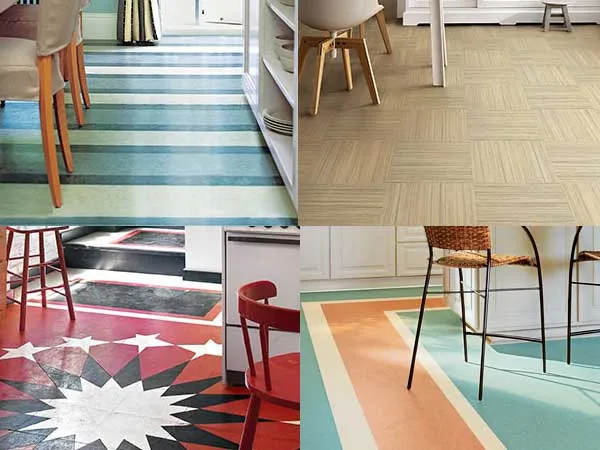
Popular Patterns and Styles
- Marbled: A classic look that mimics the appearance of natural stone.
- Solid colors: For a clean, modern look, or to create bold geometric designs.
- Wood-look: Patterns that mimic the grain and color of various wood species.
- Geometric: From simple checkerboard to complex tessellations.
- Flecked or speckled: A subtle texture that adds a fun design and helps hide dirt.
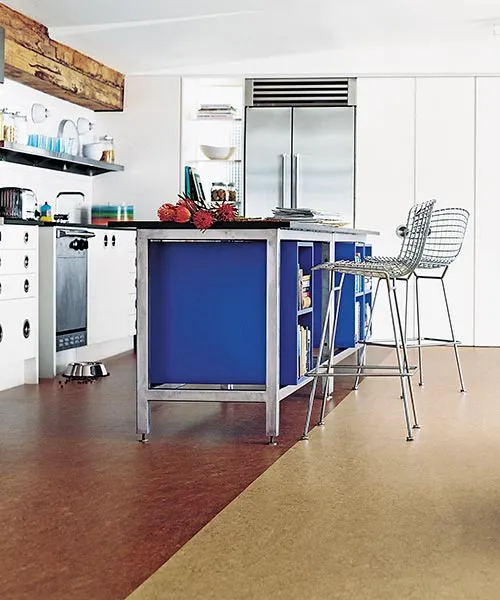
Color Selection Guide
When choosing colors for your linoleum floor, consider:
- Room size: Lighter colors can make small spaces feel larger, while darker colors add coziness to large rooms.
- Lighting: Natural and artificial lighting can affect how colors appear.
- Existing decor: Choose colors that complement your furniture and wall colors.
- Maintenance: Lighter colors show dirt more easily, while darker colors and patterns can hide imperfections.
- Mood: Cool colors like blues and greens create a calm atmosphere, while warm tones like reds and yellows add energy to a room.
Remember that linoleum colors can fade over time, especially in areas exposed to direct sunlight. Consider using window treatments to protect your floors from UV damage.
Cost Factors for Linoleum Flooring
The cost of linoleum flooring can vary widely depending on several factors. Understanding these cost components can help you budget effectively for your flooring project.
Material Costs
According to Angi.com, the price of linoleum materials typically ranges from $3–$12 per square foot, depending on:
- Quality: Higher-quality linoleum with better durability and color options tends to cost more.
- Brand: Well-known brands often command higher prices.
- Pattern complexity: Intricate designs or custom patterns may increase the cost.
- Thickness: Thicker linoleum is generally more expensive, but also more durable.
- Format: Click-together planks are usually pricier than sheet linoleum.
Installation Expenses
Professional installation costs can range from $1–$5 per square foot, which varies based on:
- Subfloor preparation: Leveling or repairing the subfloor can add to the cost.
- Room complexity: Rooms with many corners or obstacles require more labor.
- Removal of existing flooring: If old flooring needs to be removed, this will increase the cost.
- Geographic location: Labor rates vary by region.
- Installer expertise: Highly skilled installers may charge more, but often provide better results.
When budgeting for your linoleum flooring project, remember to factor in additional costs such as underlayment, adhesives, and trim pieces.
Best Rooms for Linoleum Flooring
While linoleum can be used throughout the home, certain rooms particularly benefit from its unique properties. Understanding where linoleum performs best can help you make informed decisions about your flooring choices.
Kitchens and Bathrooms
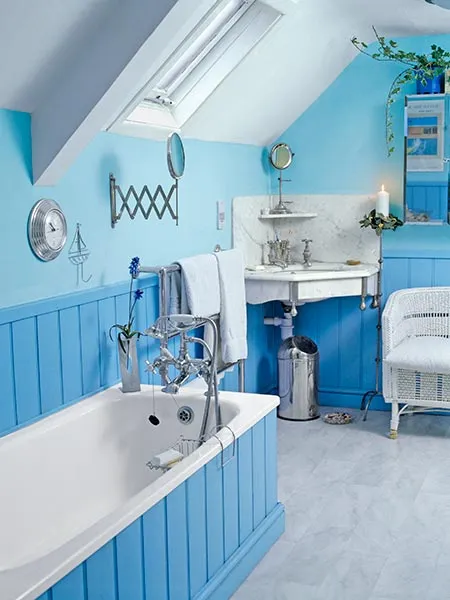
Linoleum is an excellent choice for kitchens and bathrooms due to its:
- Water resistance: While not completely waterproof, linoleum handles occasional spills well.
- Easy cleaning: Its smooth surface makes wiping up messes quick and simple.
- Comfort underfoot: Linoleum provides a softer surface than tile for extended standing.
- Antimicrobial properties: Natural resistance to bacteria and mold growth is ideal for these moisture-prone areas.
- Design flexibility: A wide range of colors and patterns can complement any kitchen or bathroom style.
Living Areas and Bedrooms
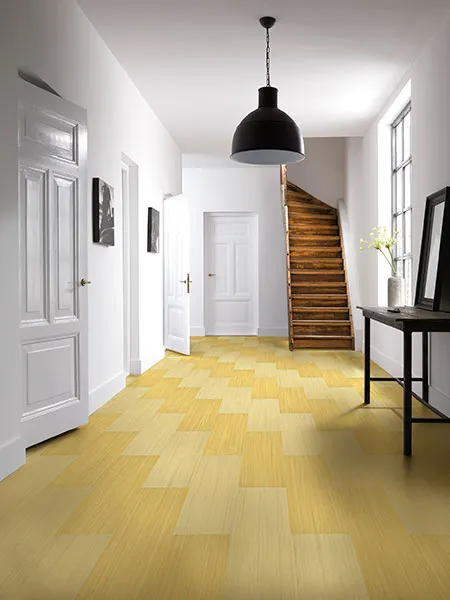
Linoleum can also be an excellent option for living spaces and bedrooms because of its:
- Durability: It holds up well in living areas with higher foot traffic.
- Noise reduction: Linoleum absorbs sound better than harder flooring materials.
- Warmth: It feels warmer underfoot than tile or stone, making it cozy for bedrooms.
- Allergy-friendly: Unlike carpet, linoleum doesn’t trap allergens, making it a good choice for those with sensitivities.
- Design versatility: From wood-look planks to bold patterns, linoleum can suit any decor style.
When considering linoleum for these areas, remember that it may not provide the same level of luxury or resale value as hardwood or high-end tile. However, its practicality and eco-friendliness make it an attractive option for many homeowners.
Common Misconceptions About Linoleum
Despite its long history and recent resurgence, linoleum is still subject to several misconceptions, including:
- Linoleum and vinyl are the same: While often confused, linoleum and vinyl are distinct materials. Linoleum is made from natural ingredients, while vinyl is a synthetic product.
- Linoleum is outdated: Modern linoleum offers a wide range of colors and patterns, making it suitable for contemporary designs.
- Linoleum is difficult to maintain: With proper care, the upkeep for linoleum is quite durable and easy.
- Linoleum is not durable: When properly installed and maintained, linoleum can last for decades.
- Linoleum emits harmful chemicals: Linoleum releases minimal VOCs, making it a healthy choice for indoor environments.
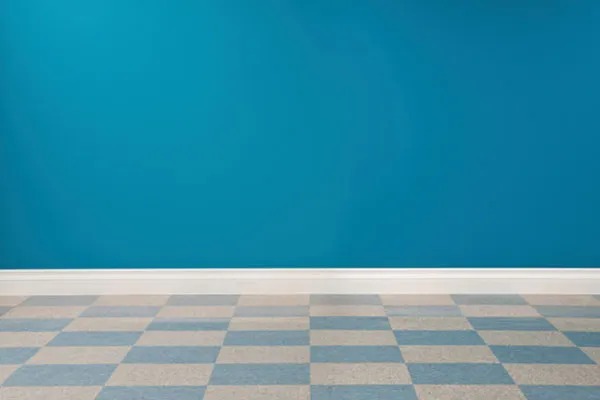
Our Conclusion
Linoleum flooring offers a unique combination of durability, eco-friendliness, and design versatility. Its natural composition makes it an environmentally responsible choice, while its wide range of colors and patterns allows it to fit seamlessly into any decor. Despite some misconceptions and potential drawbacks, linoleum’s benefits make it a strong contender for various areas of your home. Whether you’re renovating a kitchen, updating a bathroom, or looking for an allergy-friendly option for bedrooms and living areas, linoleum flooring is worth considering. With proper installation and maintenance, your linoleum floors can provide decades of beauty and functionality.
